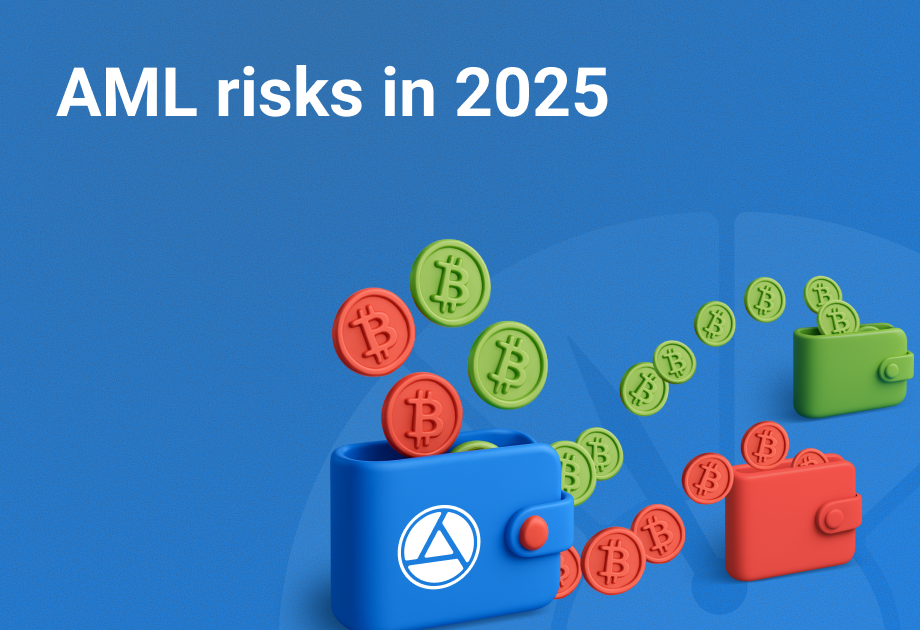A Financial Flow with No Room for Error: How Businesses Can Manage Cryptocurrency
Everything CFOs need to know about working with cryptocurrency.

Corporate financial flows are increasingly bypassing banks and acquiring services, moving through the blockchain instead. In 2024 alone, over $10 billion USDT passed through TRON daily. By May 2025 — already $20 billion. In 2024, the total transaction volume in stablecoins reached $13.5 trillion, surpassing Visa’s $13.3 trillion.
Companies face difficulties when implementing crypto payments into their operations. Alongside this new payment method comes chaos, risks of freezes, lack of transparency in accounting, human error, and lack of control. In this article, we explain how to properly integrate cryptocurrencies into corporate operations and what to look for when choosing a crypto payment solution.
Key Takeaways
- Cryptocurrency in business is a payment tool, not an investment. Companies use it for payments and transfers, not for long-term storage.
- Speed and accessibility. Transactions settle in seconds, work 24/7, and cost less than SWIFT or SEPA.
- Facts speak for themselves. In 2024, stablecoin settlement volume ($13.5 trillion) surpassed Visa ($13.3 trillion).
- Errors are critical. There are no chargebacks in blockchain — every operation must be correct and confirmed.
- Excel can’t cope. Manual accounting of hundreds of transactions quickly turns into chaos and financial loss.
- Blockchain is not anonymous. Analytics services can deanonymize transactions and identify business structures.
- Centralized risks. USDT and USDC issuers can freeze addresses: in 2024 alone, over $1.3 billion was frozen.
- The solution lies in systemization and automation. Convenient reporting, unlimited wallets, built-in AML checks, and privacy protection.
Cryptocurrency as a Means of Payment
According to the Chainalysis Crypto Crime Report 2024, only 0.34% of all on-chain activity in 2023 was related to illegal activity. More than 99% of transactions were legal: B2B, B2C, OTC, and P2P.
Most companies don’t buy crypto assets to profit from price growth. For businesses, cryptocurrency is primarily a settlement tool. It enables transferring funds quickly, directly, without intermediaries or delays.
Why Crypto Payments Are Convenient for Businesses

- Speed. Where a bank transfer may take one to five days, blockchain transactions execute in seconds or minutes.
- Fees. Network transaction costs are far lower than SWIFT, SEPA, or traditional acquiring.
- Independence from jurisdictions. Cryptocurrency allows business operations without bank accounts — critical for high-risk sectors often denied banking services.
- 24/7 availability. No banking hours, weekends, or holiday restrictions.
- No chargebacks. Blockchain transactions are irreversible, meaning clients can’t request payment reversals. This is particularly important for Forex brokers or iGaming companies.
Cryptocurrency gives businesses flexibility and speed that traditional finance cannot. But challenges and risks are unavoidable.
Management Risks: From Excel to Data Leaks
Adopting cryptocurrency in business is easy. A CFO or manager downloads a mobile wallet, copies an address, and presses “send.” It’s simple at first, but once there are more than three transactions a month, painful questions arise:
- Which manager sent the funds?
- Where is this recorded?
- What was the rate and blockchain fee at the time?
- Was the operation logged in accounting?
Finance teams quickly face chaos, with crypto payments turning into an opaque zone vulnerable to confusion, human error, or employee fraud.
Irreversible Errors
Unlike the banking system, blockchain offers no reversal mechanism. If a manager enters the wrong address, the money is lost forever. Sending USDT TRC20 to an ERC20 address? Another financial loss. There is no cancellation option — this is a blockchain feature businesses must accept.
Problems with Manual Accounting
Many companies record crypto transactions manually in Excel. It’s a temporary solution that can’t scale due to problems such as:
- data entry errors,
- inability to analyze rates and fees in real time,
- lack of transparency for management.
In practice, the business operates “on trust” — without structure, control, or reliable information. Such an approach is unacceptable in financial flows.
Blockchain Transparency and Deanonymization
Blockchain is a transparent ledger storing the full history of transactions. This is both an advantage and a threat. On one hand, transparency ensures data immutability. On the other, it enables deanonymization: even without names or IDs, addresses can be linked and traced back to users. In recent years, kidnappings of crypto investors have become more frequent worldwide.
Analysis Technologies

Analysts, criminals, and even competitors can monitor blockchain transactions using methods such as:
- Address clustering. Using different wallets doesn’t protect against transactions being grouped together.
- Transaction graphs. Connections, volumes, and frequency are mapped.
- Off-chain data. Exchange leaks, forums, social networks, and KYC databases can link addresses to real people and companies.
The result: any business that doesn’t build privacy-oriented architecture risks exposing its turnover and wallet structure to competitors and malicious actors.
Centralized Risks: Asset Freezes
Stablecoins dominate crypto settlements due to their price stability and ease of use. But they come with risks: freezes, blocks, compliance risks. Issuers like Tether and Circle control token supply and can freeze addresses at law-enforcement request. In 2024 alone, Tether and Circle froze more than $1.3 billion in USDT and USDC.
Exchanges and payment providers can also block funds without warning. Worse, a freeze can happen because of your counterparty, if neither you nor they monitor AML risks. Here we described a case where a company’s assets were frozen due to just one suspicious client payment.
Crypto Finance Hygiene
To minimize risks, companies must adopt “blockchain hygiene” practices:
- Assign a unique address for each incoming transaction.
- Avoid reusing addresses.
- Frequently change addresses for paying blockchain fees.
- Run regular AML checks on incoming funds.
- Protect IP addresses and wallet metadata. Nodes should only receive obfuscated information.
Can these rules be followed without a dedicated payment solution? No. With manual address generation and Excel-based accounting, a company’s crypto assets remain under constant threat of freezes, hacks, or employee fraud.
Automation of Crypto Flows vs. Chaos
The only way businesses can scale crypto operations comfortably is through payment solutions designed for companies.
The BitHide wallet provides a toolkit for transparent, secure, and convenient crypto management, including:
- Unlimited wallets for splitting flows across profit centers.
- Invoice generation and direct payment acceptance within company infrastructure.
- Convenient balance reports for any period, with fixed crypto rates and blockchain fees at the time of deposit.
- Privacy protection via Dark Wing technology: each transaction routes through three IP changes, one-time addresses for transfers, and temporary addresses for blockchain fees.
- Built-in AML checks. Businesses can configure risk thresholds and check incoming assets automatically or manually.
- Mass payouts. Send funds to many recipients at once, eliminating human error and saving time.
These tools turn cryptocurrency from a chaotic, opaque stream into a manageable part of a company’s financial system.
Conclusion
For businesses, cryptocurrency is not just an “alternative payment method” but a full-fledged financial instrument that must be integrated into corporate processes. Every mistake is costly, and blockchain’s transparency increases the risk of asset freezes or hacks.
To reduce risks and operate effectively, companies must:
- implement management and accounting systems for all crypto operations,
- automate instead of relying on manual input,
- conduct regular AML checks,
- build privacy-oriented infrastructure.
Contact the BitHide team to learn how our solution helps businesses work with cryptocurrency securely, conveniently, and with reduced risk.


